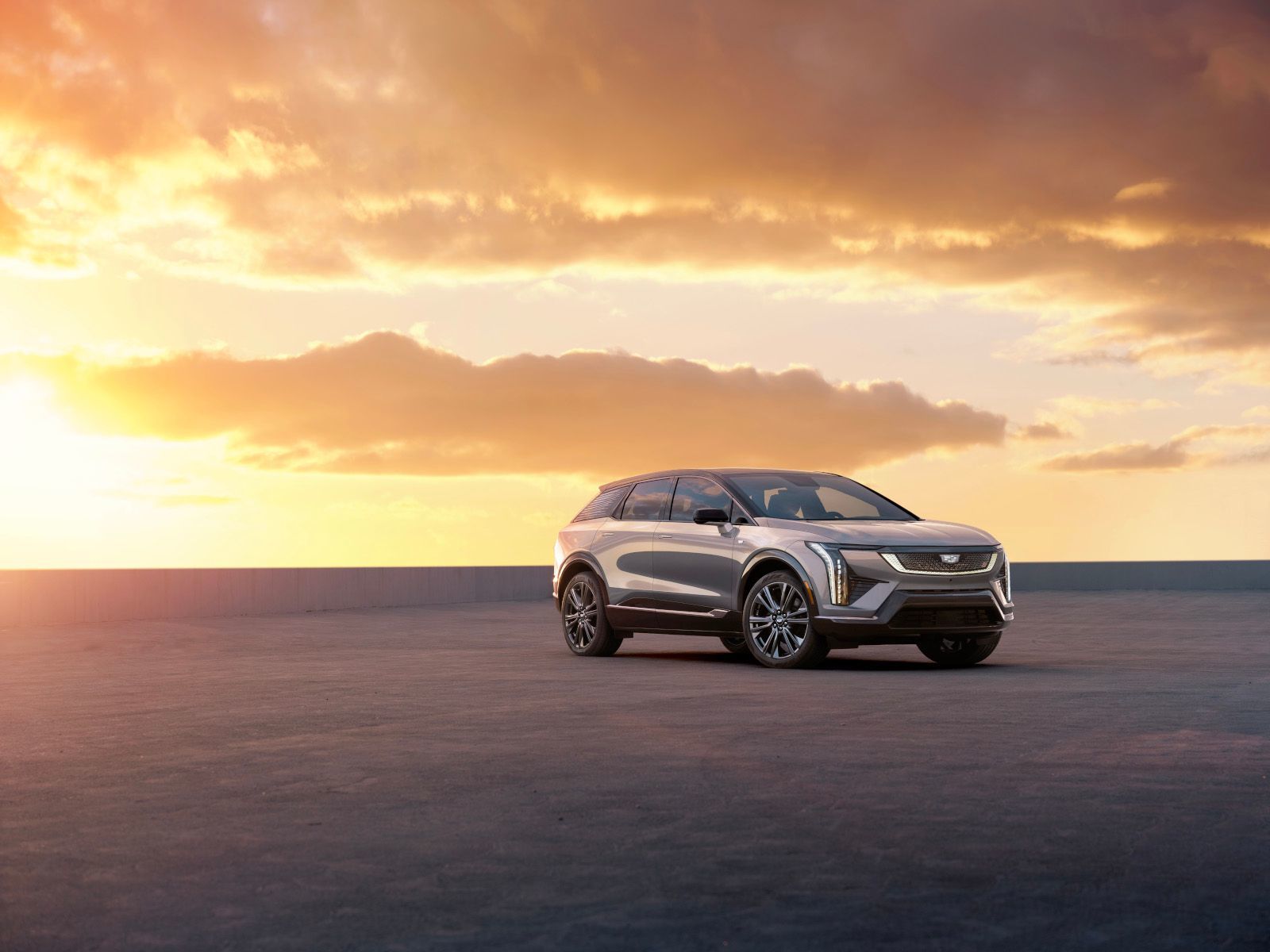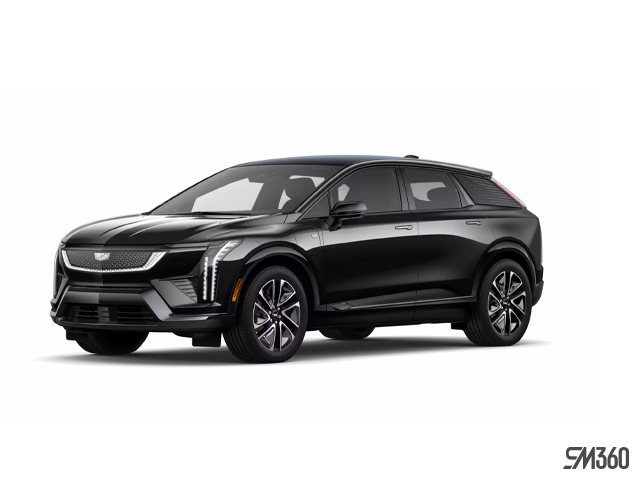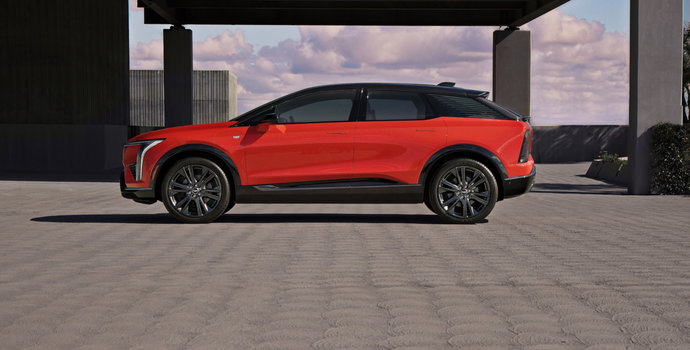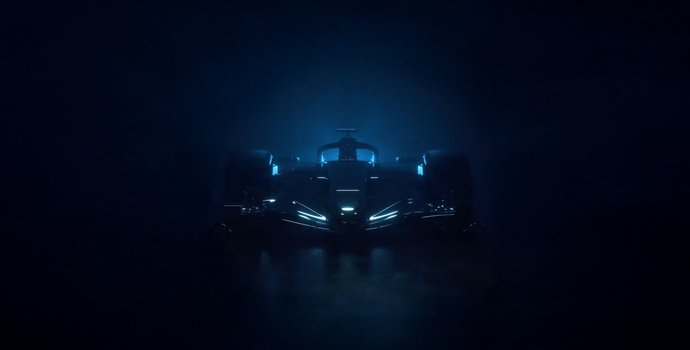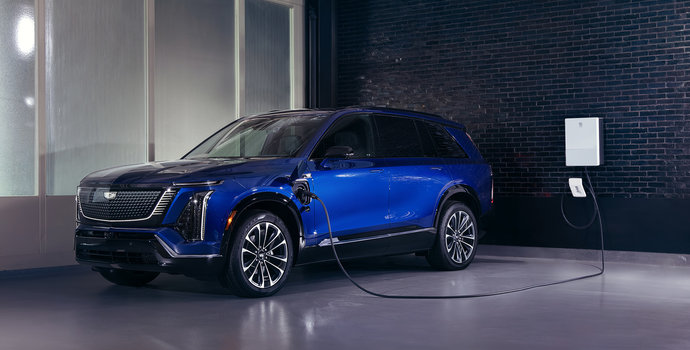Winter in Toronto brings freezing temperatures, snow-covered roads, and questions for drivers considering an electric vehicle. If exploring Cadillac's electric lineup—the LYRIQ, OPTIQ, VISTIQ, or ESCALADE IQ—drivers may wonder how these luxury EVs handle Ontario's harsh winter conditions. From range performance in sub-zero weather to charging efficiency and cabin comfort, this guide addresses the practical realities of driving a Cadillac EV through a Toronto winter.
Embrace Winter Driving with Cadillac
Cadillac EVs offer impressive range, fast-charging, and comfort to tackle winter driving. Experience the luxury and performance of an electric vehicle designed for all-season comfort.
Shop Electric Vehicles >
Understanding how electric vehicles respond to cold weather helps make informed decisions. Cadillac's Ultium platform integrates advanced thermal management systems designed specifically to maintain performance when temperatures drop. Commuting along the Gardiner Expressway or heading north to cottage country, knowing what to expect from an EV in winter conditions ensures confidence behind the wheel.
How Cold Weather Affects EV Range
Electric vehicle range decreases in winter due to several factors. Battery chemistry becomes less efficient at low temperatures, reducing the energy available for propulsion. Cabin heating draws significant power from the battery, as EVs lack the waste heat generated by combustion engines. Increased rolling resistance from snow and cold tires, along with denser cold air, also impacts efficiency.
For Cadillac's electric lineup, expect range reduction during Toronto's coldest months:
- LYRIQ: Up to 525 km range (Luxury/Premium Luxury RWD) in optimal conditions; AWD Sport models offer up to 459 km
- OPTIQ: Up to 443 km range (V-Series AWD) under ideal circumstances
- VISTIQ: Up to 491 km range (Dual Motor AWD) when fully charged
- ESCALADE IQ: Up to 748 km range capability, with ESCALADE IQL offering up to 740 km
Winter conditions typically reduce these ranges by 20-40% depending on temperature severity, driving habits, and use of climate control. A LYRIQ with 525 km summer range might deliver 315-420 km in -15°C weather with cabin heating active.
Ultium Platform Thermal Management
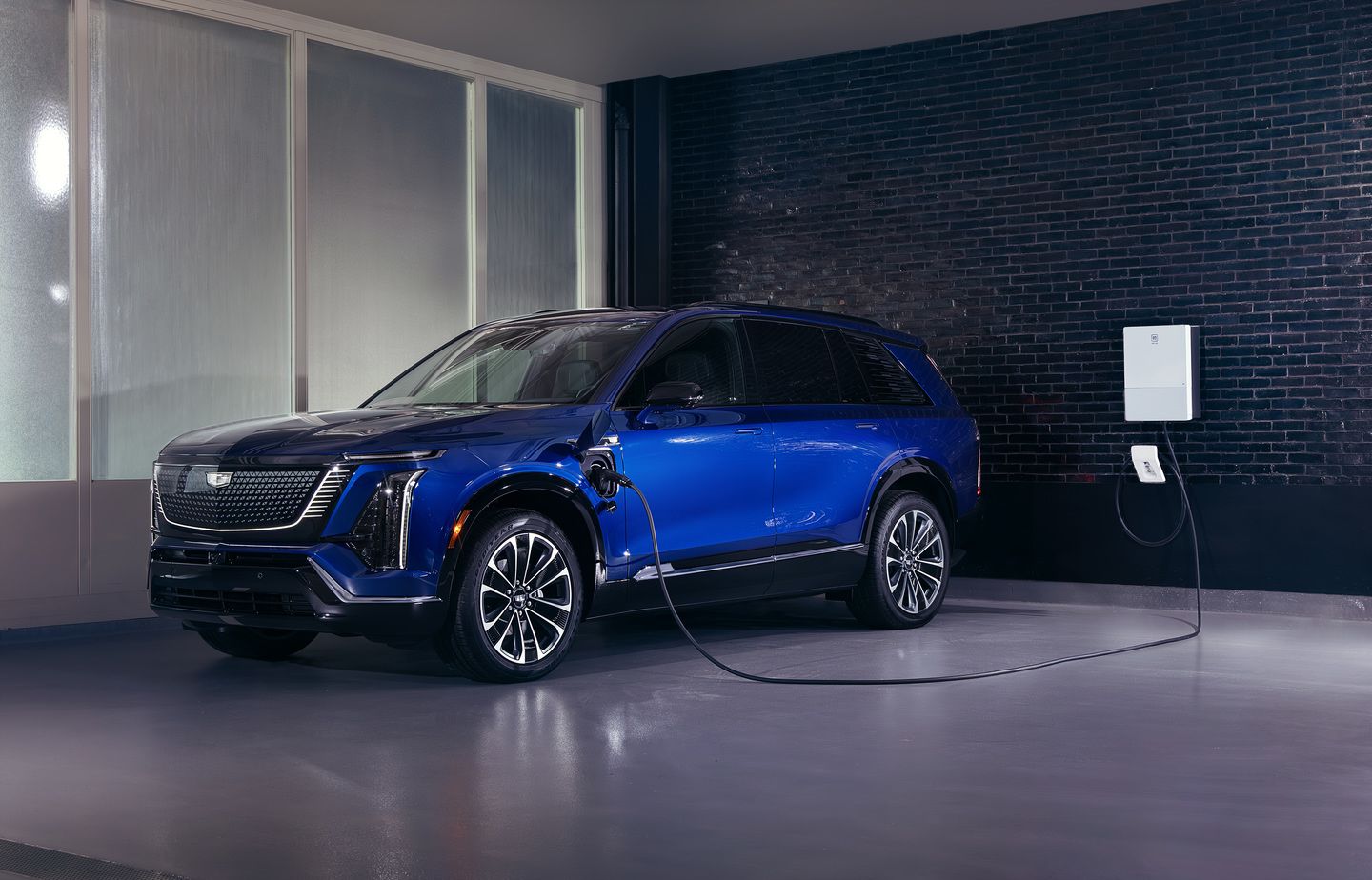
Cadillac's Ultium battery system incorporates thermal management technology that actively regulates battery temperature. The system uses liquid cooling and heating to maintain optimal operating temperature regardless of external conditions. This prevents excessive range loss and protects long-term battery health.
The Ultium architecture in all Cadillac EVs includes:
- Liquid thermal conditioning that warms or cools battery cells as needed
- Integrated heat pump systems that efficiently warm the cabin while minimizing battery drain
- Battery preconditioning capability when connected to a charger
- Insulated battery enclosures that reduce heat loss in extreme cold
These systems work continuously to balance performance, range, and battery longevity. The heat pump technology, standard across the lineup, transfers heat rather than generating it electrically, significantly reducing the energy required for cabin comfort compared to traditional resistance heating.
Preconditioning: Your Winter Range Advantage
Battery and cabin preconditioning represents one of the most effective strategies for maximizing winter range. When preconditioning while plugged in, the vehicle uses grid power rather than battery energy to warm the battery and cabin before departure.
Preconditioning delivers several benefits:
- Brings battery cells to optimal operating temperature before driving
- Warms the cabin to a preferred temperature using external power
- Preserves battery charge for driving range rather than heating
- Reduces initial power draw when beginning a journey
Schedule preconditioning through the Cadillac mobile app or vehicle infotainment system. Set departure times for regular commutes, and the vehicle automatically prepares itself. On a typical Toronto winter morning, preconditioning can preserve 15-25 km of range that would otherwise be consumed warming a cold battery and frozen cabin.
For DC fast charging sessions, the vehicle automatically preconditions the battery when navigation is set to a charging station, ensuring optimal charge acceptance rates upon arrival.
Charging Performance in Cold Weather
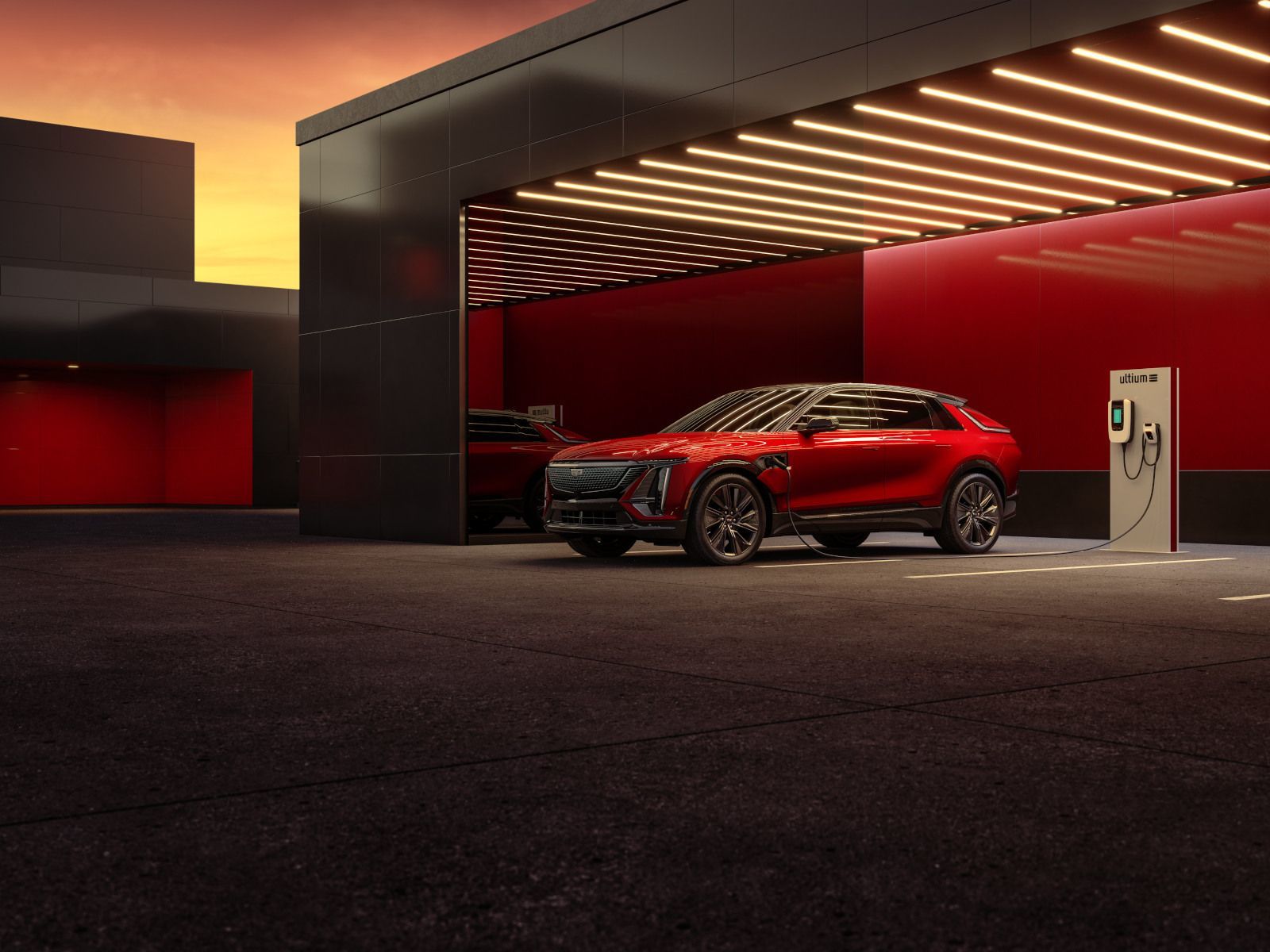
Charging speed decreases in cold weather as battery chemistry becomes less receptive to rapid energy input. Lithium-ion batteries charge more slowly when cold to prevent damage and maintain long-term health. Understanding these limitations helps plan charging sessions effectively.
Level 2 Charging (240V):
Cold weather has minimal impact on Level 2 charging speeds since these sessions typically last several hours, allowing the battery to gradually warm during charging. Home charging remains practical and reliable throughout winter.
- LYRIQ/OPTIQ/VISTIQ: Available 19.2 kW charging adds approximately 58-75 km of range per hour
- ESCALADE IQ: 19.2 kW AC charging provides approximately 58 km of range per hour
DC Fast Charging:
Fast charging performance varies with temperature. Extremely cold batteries may initially accept charge more slowly until thermal management systems bring cells to optimal temperature.
- LYRIQ: Standard charging capability
- OPTIQ: DC fast charging adds significant range in short sessions
- VISTIQ: Up to 128 km of range in approximately 10 minutes from low state of charge
- ESCALADE IQ: Up to 188 km of range in 10 minutes using 350 kW DC fast chargers
Battery preconditioning before fast charging sessions significantly improves charge acceptance. When navigating to a DC fast charger, the vehicle prepares the battery to receive maximum power upon arrival.
All-Wheel Drive and Winter Traction
Dual-motor all-wheel drive systems in Cadillac EVs provide exceptional winter traction. The instant torque delivery and independent control of front and rear motors create precise power distribution that adapts to changing surface conditions.
AWD Configurations:
- LYRIQ: Dual-motor AWD available across most trims; LYRIQ-V delivers 615 hp and 650 lb-ft
- OPTIQ: Dual-motor AWD optional on Luxury/Sport/Premium trims (440 hp, 498 lb-ft); V-Series standard AWD (519 hp, 650 lb-ft)
- VISTIQ: Standard dual-motor AWD (615 hp, 650 lb-ft)
- ESCALADE IQ: Standard eAWD with front and rear drive motors (680 hp normal mode, 750 hp Velocity Max)
The electronic all-wheel drive systems respond faster than mechanical systems, adjusting power distribution hundreds of times per second. This provides confident handling on snow-covered Toronto streets and highways.
Winter driving modes optimize throttle response and traction control for slippery conditions. Snow/Ice mode, available across the lineup, adjusts accelerator sensitivity and stability systems for maximum control on low-traction surfaces.
Cabin Comfort Technologies
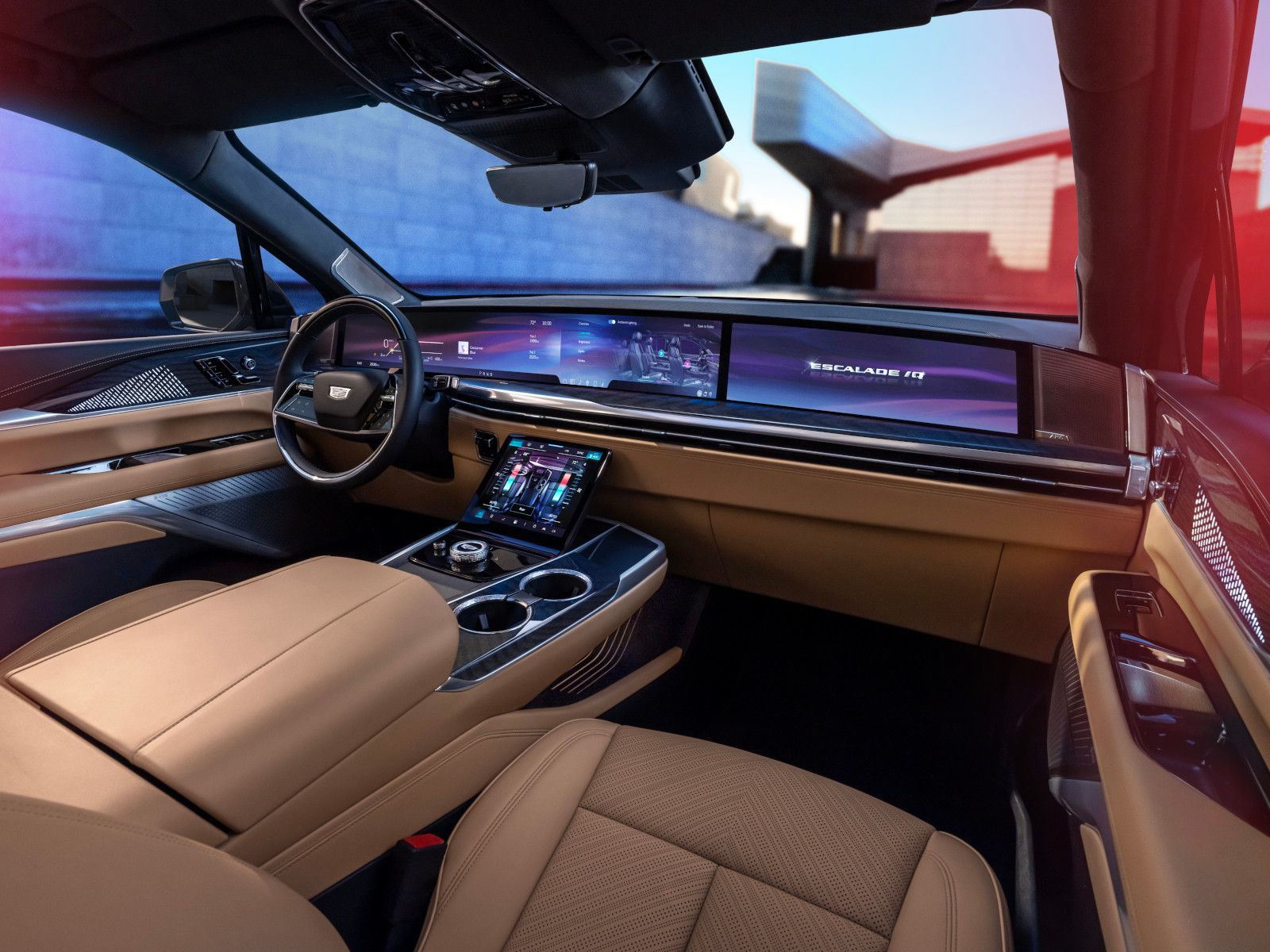
Maintaining cabin comfort without excessive battery drain requires efficient heating technology. Cadillac's heat pump systems and targeted heating features keep occupants comfortable while preserving range.
Heating Systems:
- Heat pump technology standard across all models transfers ambient heat rather than generating it electrically
- Heated seats and heated steering wheels provide direct warmth using minimal energy
- Dual-zone or tri-zone automatic climate control allows precise temperature management
- Heated windshield and heated rear window improve visibility without manual scraping
Heated seats warm occupants more efficiently than cabin air heating. Using seat and steering wheel heaters while reducing cabin temperature by 2-3 degrees can extend range by several kilometres per trip without sacrificing comfort.
The panoramic glass roofs on ESCALADE IQ and fixed glass roofs on other models include UV-filtering films and tinting that maintain cabin comfort while maximizing natural light. This reduces heating demands during sunny winter days.
Real-World Winter Driving Strategies
Maximizing winter range requires adapting driving habits and utilizing available technologies. These practical strategies help Toronto drivers get the most from their Cadillac EVs:
- Precondition before every trip: Schedule automatic preconditioning or initiate it manually 15-20 minutes before departure
- Use Eco or Tour mode: These drive modes optimize efficiency by moderating throttle response and climate system operation
- Leverage regenerative braking: One-pedal driving recovers energy during deceleration, particularly valuable in stop-and-go city traffic
- Maintain moderate cabin temperatures: Setting climate control to 20-21°C instead of 23-24°C preserves range while maintaining comfort
- Park in garages when possible: Indoor parking keeps batteries warmer and reduces energy needed for preconditioning
- Plan charging around your routine: Charge at home overnight or at work during the day to maintain battery warmth
- Monitor range actively: Use the vehicle's range display to understand how driving style and climate settings affect remaining distance
The navigation systems in all Cadillac EVs calculate routes considering current weather, terrain, and available charging infrastructure. Trust these calculations when planning longer trips during winter months.
Key Cadillac Winter Performance Takeaways

|
Aspect
|
What Toronto Drivers Should Know
|
|
Range Impact
|
Expect 20-40% reduction in extreme cold; preconditioning minimizes loss
|
|
Charging Speed
|
Level 2 charging reliable year-round; DC fast charging slower until battery warms
|
|
Thermal Management
|
Ultium platform actively maintains optimal battery temperature
|
|
Traction Control
|
Dual-motor AWD provides superior winter handling with instant torque modulation
|
|
Cabin Comfort
|
Heat pump systems and targeted heating maintain warmth efficiently
|
|
Practical Range
|
LYRIQ: 315-420 km winter range; VISTIQ: 295-390 km; ESCALADE IQ: 450-600 km
|
Experience Cadillac's Electric Lineup at City Cadillac
Winter driving in Toronto demands vehicles that deliver confidence, comfort, and capability. Cadillac's electric lineup combines advanced thermal management, powerful all-wheel drive systems, and sophisticated climate technologies to maintain performance throughout Ontario's coldest months. From the efficient OPTIQ to the spacious ESCALADE IQ, these vehicles are engineered to handle Canadian winters without compromise.
Visit City Cadillac in Toronto to explore how Cadillac EVs perform in real winter conditions. Our team can demonstrate preconditioning features, explain charging strategies for cold weather, and help understand which model best suits Ontario driving needs.
You might also be interested in these blogs: Ranking Every Cadillac Electric SUV by Range and Space, How Fast Do 2026 Cadillac EVs Charge? A Guide to Level II & III Charging Times, A Look into the Future with the 2025 Cadillac Escalade IQ


